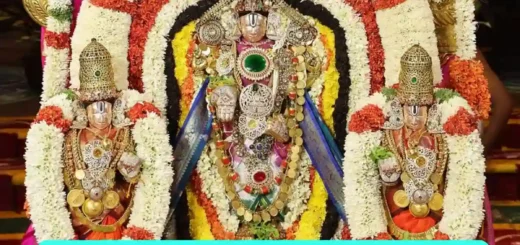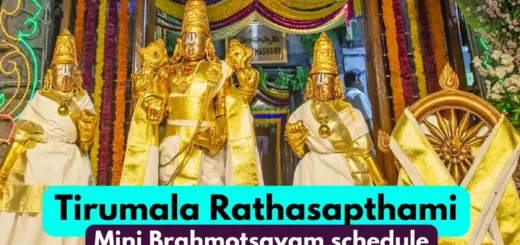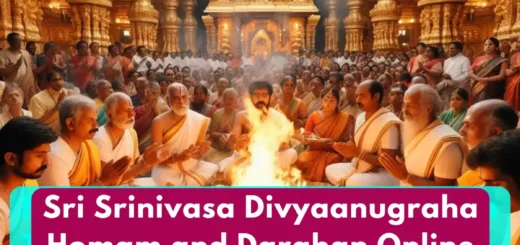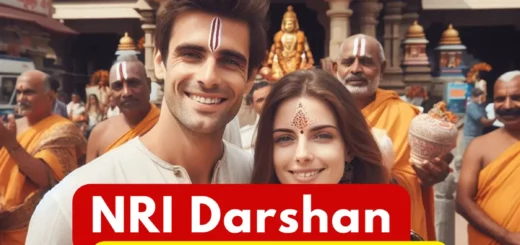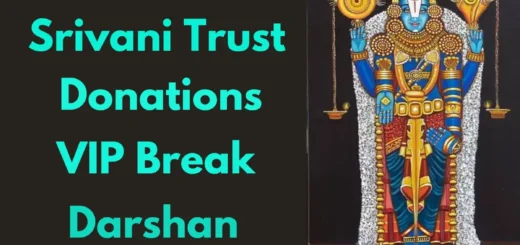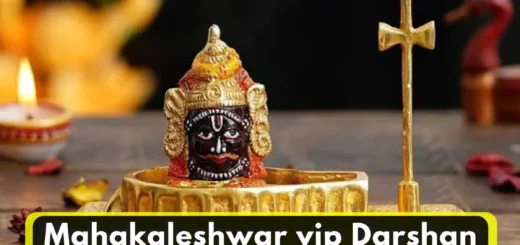TTD Brahmotsavam Main Activities and Key Highlights
This article provides information about the main activities and key highlights during the TTD Brahmotsavam.
Introduction
Brahmotsavam, a grand and sacred Hindu festival, is celebrated with great fervor and devotion in the holy town of Tirumala, Andhra Pradesh, India.
This utsavam (celebration) is an elaborate affair that lasts for nine days, and it encompasses a series of rituals and events that honor Lord Sri Venkateswara, at specific TTD Brahmotsavam Dates
Let’s dive into the intricacies of Brahmotsavam and explore the various activities that take place during this auspicious occasion.
Brahmotsavam Activities
| The main activities carried out during Brahmotsavam are |
| Aalaya Suddhi |
| Mritsangrahanam |
| Dwajarohanam |
| Vahana Seva |
| Srivari Koluvu |
| Snapanam |
| Choornabhishekam |
| Chakrasnanam |
| Devatodwasanam |
| Dhwajavarohanam |
Know TTD Brahmotsavam 2024 Dates Timings Vahanam Schedule
Know TTD Brahmotsavam Main Activities and Key Highlights
Aalaya Suddhi
The brahmotsavam begins with Aalaya Suddhi, a very important ritual where the temple of Lord Sri Venkateswara and it’s surroundings are cleaned following the guidelines in religious texts.
The temple premises and its surroundings are Decorated with vibrant flowers and mango leaves, transforming the temple into a divine abode.
Mritsangrahanam
On the day before the start of Brahmotsavam, a ritual called Mritsangrahanam is performed. Temple officials offer prayers to deities like Vishvaksena, Anantha, Sudarshana, and Garuda.
They also Pray to Mother Earth and collect a small quantity of earth(Soil) and keep in a room .
This sacred earth(soil) is used in the Ankurarpanam ritual, where nine types of cereals are sownina separate room, symbolizing the beginning of the celebrations.
Dwajarohanam
The Brahmotsavam begins with the hoisting of a flag bearing an image of Garuda.
This ceremony takes place at the Dwajasthambham, located near the Nadimi Padi Kavili inside the temple complex.
Temple officials raise the flag while temple priests chant Vedic mantras.
According to tradition, Garuda is believed to travel to Devalokam to invite gods such as Brahma, Indra, Yama, Agni, Kubera, and Vayudeva, as well as esteemed sages like Vasistha and Vishwamitra, to participate in the Srivari Brahmotsavam.
Vahana Sewa
During the Brahmotsavam festival, the Lord is carried in a procession through the Mada streets of Tirumala using various vehicles known as vahanas.
Each of these vahanams holds its unique significance and conveys the Lord’s message in its own manner.
Srivari Koluvu
During brahmotsavam lord holds court in the main temple, after taken around in a procession. The temple priests perform Naivedyam during this time
Snapanam
After the procession, there’s a ritual known as Snapanam or Utsavananthara Snapanam. During this ritual, the Lord is bathed with herbal water.
It is believed to alleviate the strain that the Lord may have experienced during the procession.
Choornabhishekam
The Lord and his consorts are bathed after being anointed with sandalwood powder.
This ceremony takes place on the morning of the ninth day of the Brahmotsavam festival.
Following the bath, the Lord is taken in a procession around the streets of Tirumala, and devotees are given sandalwood powder used in the ceremony, believed to possess the power to remove obstacles from their lives.
Chakrasnanam
The Chakrasnanam ritual is similar to a bathing ceremony that follows a yagna.
It occurs on the morning of the final day of the Brahmotsavam festival, during which the Lord, his consorts, and Sri Sudarshanachakram are bathed in the Swami Pushkarini, a sacred pond.
Devotees also have the opportunity to bathe in the Swami Pushkarini alongside Sri Sudarshanachakram.
This ritual is highly regarded for its sanctity, and people of all religions, castes, and creeds can participate in it.
Devatodwasanam
On the last day of the Brahmotsavam festival, there is a ceremony involving bidding farewell to the rishis (sages) and Gods as they return to Devalokam.
This ceremony takes place after the daily archana.
During Devatodwasanam, Lord Brahma is honored for organizing the entire festival by officials as a gesture of gratitude for his role in the event.
Dwajavarohanam
The lowering of the flag, which is hoisted on the first day of the Brahmotsavam festival, takes place in the evening on the last day of the Brahmotsavam.
